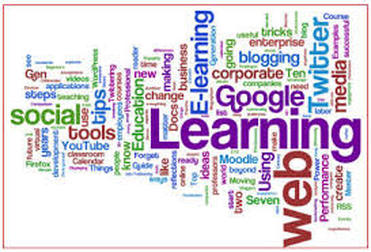Question 2
Can Online Learning make a significant impact in improving literacy, language and numeracy levels with marginalized, remote or rural communities?
Online learning would work well for marginalized, remote or rural communities due to some of the constraints being faced by them. Constraints such as transportation, being far from universities, family issues becomes a barrier and stops them form learning. According to Carliner (1999, “online learning is an educational material that is presented on a computer” (p.4). Khan (1997) defines online learning as an innovative approach for delivery instruction to a remote audience.
Online
learning is useful and relevant for most adults with literacy learning needs as
long as the learning programme is designed properly to fit learners needs and
lifestyle, their proficiency with computer-related technologies and their
reading literacy (Fletcher, Nicholas & Davis, ). Online learning brings the
benefit of opening up greater interaction between adults’ study, work, home and
community environments, simply because learning environment can be extended
into those places.
According to Nash & Kallenbach (2009),
“e-learning is particularly accommodating of learners who cannot easily access
face to face tuition, such as those in rural communities. Activities related to
everyday life challenges and family can support online learning by providing
strong motivational contexts.
Moreover, online learning can be used to motivate,
recruit and retain adults with literacy deficits.
Even children in India are also benefiting from e-learning. The you tube video clip below shows how e-learning is transforming in India and enhancing children educational quality.
Even children in India are also benefiting from e-learning. The you tube video clip below shows how e-learning is transforming in India and enhancing children educational quality.
Computer programmes are embedded in lessons and attendance has gone up according to the teachers and this has led to children have high confidence level.
Furthermore, adults with disabilities in
remote or rural communities that adversely affect their ability to have access
to learning find digital technologies and e-learning that fit their needs
highly useful.
In general, online learning reaches to most parts of
the communities where learning is impossible or difficult for people. Having
the flexibility of having online learning gives learners a chance to still
fulfill their dreams and reach their goals.
References
Ally, M. (2004). Foundations of Educational Theory for Online Learning. In T. Anderson, & F. Elloumi, Theory and Practice for Online Learning (pp. 3-31). Athabasca: Athabasca University.
Carliner, S. (1999). Overview of online learning. Amherst, MA: Human Resource Development Press.
Fletcher, J., Nicholas, K., & Davis, N. (2011). Supporting adults to address their literacy needs using e-learning. Journal of Open, Flexible and Distance Learning, 15(1), 17–29.
Khan, B. (1997). Web-based instruction: What is it and why is it? In B. H. Khan (Ed), Web-based instruction (pp. 5-18). Englewood Cliffs, NJ: Educational Technology Publications
Nash, A., & Kallenbach, S. (2009). Making it worth the stay: Findings from the New England Adult Learner Persistence Project. Boston, MA: New England Literacy Resource Center.
How e-Learning is Transforming Rural India: https://www.youtube.com/watch?v=xHkhPkuvzCg
How e-Learning is Transforming Rural India
Carliner, S. (1999). Overview of online learning. Amherst, MA: Human Resource Development Press.
Fletcher, J., Nicholas, K., & Davis, N. (2011). Supporting adults to address their literacy needs using e-learning. Journal of Open, Flexible and Distance Learning, 15(1), 17–29.
Khan, B. (1997). Web-based instruction: What is it and why is it? In B. H. Khan (Ed), Web-based instruction (pp. 5-18). Englewood Cliffs, NJ: Educational Technology Publications
Nash, A., & Kallenbach, S. (2009). Making it worth the stay: Findings from the New England Adult Learner Persistence Project. Boston, MA: New England Literacy Resource Center.
How e-Learning is Transforming Rural India: https://www.youtube.com/watch?v=xHkhPkuvzCg
